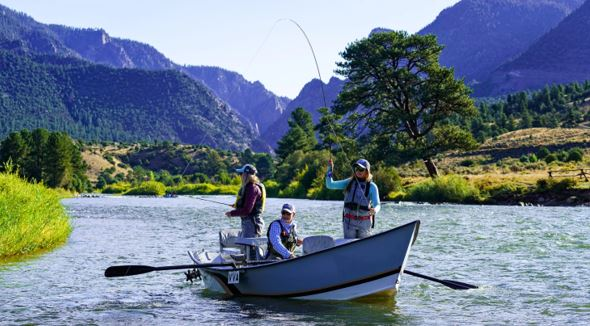We've arrived at a topic that is crucial to your winrate. Missplaying these spots can cost you a lot of money; you overbluff spots you should avoid or shy away from thin valuebetting. Since the most money goes in this street, you must play it well, especially in a position where you can apply pressure and take advantage of your opponent's weaknesses. We'll discuss different lines, how you might arrive at the river, and some of the most important/frequent plays that can cost you money or add to your winrate.

Three Barrel
Let's start with the classic three-barrel situation. You c-bet flop, continue with a second barrel on the turn and eventually finish the river with another bet.
This spot could go many ways since you bet different ranges with various sizes on different turn cards. For simplicity, let's keep ourselves to the polarized turn strategy, which means we arrive at the river with either a strong value hand (in some cases, a completed draw) or a bluff/missed draw.
When you had a value hand on the turn, you must evaluate the river card and possible hands your opponent might have. For instance, you double-barrelled your  A
A  K on
K on  K
K  T
T  2
2  5 with an overbet, and the river is a
5 with an overbet, and the river is a  6 . Your thought process might be that the river card only changed a little unless your opponent had exactly K6s, a minor portion of his entire range. Their range includes various missed draws (both flush and straight) and numerous Kx combos. At the same time, it's unlikely that an average opponent bluff you in this spot and most combos your opponent could have, you beat. So it's a clear valuebet situation.
6 . Your thought process might be that the river card only changed a little unless your opponent had exactly K6s, a minor portion of his entire range. Their range includes various missed draws (both flush and straight) and numerous Kx combos. At the same time, it's unlikely that an average opponent bluff you in this spot and most combos your opponent could have, you beat. So it's a clear valuebet situation.
Sometimes, it is not so obvious to bet for value. The river card could change the board as it completes a flush card or brings an overcard. You'll always have to evaluate according to the betting pattern and your opponent's playing style if that card really helped her or not.
What else to look for when you are unsure about valuebetting the river? Look at your opponent's stats. High went to showdown (wtsd more than 32), low won at showdown (w$sd less than 50), low aggression (afq less than 30) on the river and their combination are promising signs of trying thin valuebets. If your opponent is pretty aggressive on earlier streets by donk betting or check-raising with a high frequency, that's another good point, meaning he has weaker, bluff-catching hands.
How about when you had a bluff and arrived at the river with a missed draw or any air hand that seemed like a good idea to continue betting the turn with? First, you must understand how wide you could valuebet on that specific runout. That will determine how much you can bluff for particular sizings (once again, in theory). The bigger you bet, the more you can bluff proportionally because that gives you a better risk-reward and worse odds to your opponent.
Secondly, you evaluate your cards, such as how much they block from your opponent's fold and calls (good and bad blockers). For instance, on the  K
K  T
T  2 board, you were betting
2 board, you were betting  7
7  8 twice, and the river is a brick. Your card has awful blockers; since it blocks all kinds of flush draws, your opponent would let go to a third barrel, but you don't block virtually any hands, like top pair+, which would definitely call down a reasonable sizing.
8 twice, and the river is a brick. Your card has awful blockers; since it blocks all kinds of flush draws, your opponent would let go to a third barrel, but you don't block virtually any hands, like top pair+, which would definitely call down a reasonable sizing.
Another factor you should consider is how much showdown value you have. When you have an ace-high or made any pair during the hand, it's less likely you want to include them in your bluffs (unless they have fantastic blockers). Yes, sometimes you'll lose by giving up those hands, but there are cases you beat a worse pair, worst kicker or a lower missed draw. If you include too many of the above-mentioned hands, you'll be over-bluffing (especially if you don't find enough thin value bets), so it's best to avoid that.
Unless you have reads and statistics on your opponents, you can push them around. Probably the most crucial factor is when you conclude to a three-barrel bluff. Look for the total opposites of what we've discussed earlier when you play to (thin)valuebet. Be prepared to reevaluate when you get called by a hand or opponent you didn't expect.
When to finish after a delayed c-bet
Last, let's look at when to finish the aggression after you had the chance to delay c-bet. When you had a value hand on the turn, it's likely still the best hand on the river, given how passively Villain arrived at the river. If the river card didn't change anything, you could go to valuebet again with a big sizing. When the river card completes draws, that's not always bad for your hand if you assume that most draws would be led out by your opponent on the turn.
Another reason you should consider is how likely Villain calls you with weaker hands. Let's say you have  J
J  T , and the board completes
T , and the board completes  4
4  5
5  8
8  J
J  9 . How likely is your opponent to call you with a 2nd, 3rd, or lower pair? Are there enough one-pair Jx combos that might play this way? The answers are not always crystal clear; you must observe your opponents and their stats. In a low-stakes environment, players will likely choose a passive but stationary line, so thin valuebets are crucial even if you run into some stronger, underplayed hand or receive a lot of folds to your thin bets that shouldn't discourage you from testing and experimenting the borderlines.
9 . How likely is your opponent to call you with a 2nd, 3rd, or lower pair? Are there enough one-pair Jx combos that might play this way? The answers are not always crystal clear; you must observe your opponents and their stats. In a low-stakes environment, players will likely choose a passive but stationary line, so thin valuebets are crucial even if you run into some stronger, underplayed hand or receive a lot of folds to your thin bets that shouldn't discourage you from testing and experimenting the borderlines.
When you have a bluffing hand, you should consider very similar factors. A good rule of thumb is that the lower your cards are, the less or zero showdown value you have; therefore, you should bluff more. In scenarios where the ranges are vast, like a Button versus Big Blind, it gets tricky since you have an immense number of air hands with low showdown value.
Usually, blocking folds and draws but not blocking any of the calling range is not an ideal bluffing hand. For instance, having  A
A  T on
T on  3
3  6
6  7
7  K
K  9 , you block any floating A-high hand but only a few Kx combos. There are hands like 89s that improved to a pair. Sometimes, even a 78s will be curious enough to call you down. Moreover, at times, you'll have decent showdown value, for instance, a passive draw or a hand like A5s.
9 , you block any floating A-high hand but only a few Kx combos. There are hands like 89s that improved to a pair. Sometimes, even a 78s will be curious enough to call you down. Moreover, at times, you'll have decent showdown value, for instance, a passive draw or a hand like A5s.
Again, be creative and read the whole game. Even extreme deviation works when you have data and notes on your opponents. The theoretical approach should be your framework. However, as your opponents deviate significantly from optimal, you must adjust to them by valuebetting thinly more often or bluffing them more often on ideal river cards.
To be continued
As you can see, the river play is very complex. There are multiple ways to get to this street, and we've just covered the basics of the three-barrel and delayed c-bet situation. Critical thinking and exploits matter the most here. A missed thin value can harm your winrate but overbluffing a spot where your opponent has fewer reasons to fold (runout, few value hands that you represent, etc.) or her statistics indicate that you should give up more often will harm your winrate even more. Spending time understanding the principles is recommended, and it also takes much practice off the table.
Stay tuned for the next part, where we'll cover the bet-check-bet line and the spot when it's checked to the river!




















